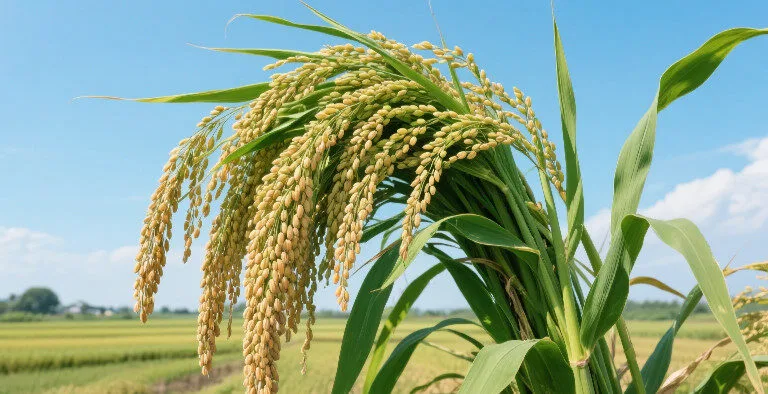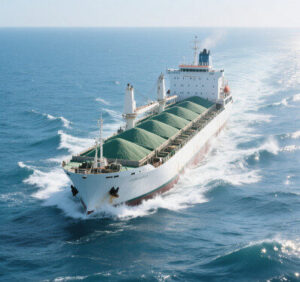Scientific fertilization is central to achieving stable and high yields in rice cultivation. An effective strategy revolves around three core principles: selecting the right fertilizer, applying it accurately, and controlling the dosage, all tailored to the growth stage and yield targets. Below is a systematic and optimized fertilization program.
Step 1: Selecting the “Right” Fertilizer Based on Needs
Fertilizer selection should align with the nutrient requirements at different growth stages, while also considering soil properties (e.g., acidity, straw incorporation).
1. Base Fertilizer
-
Mechanical transplanting with side-deep fertilization: Use controlled-release blended fertilizers with a recommended ratio of 22-14-12 or 2:1:1.2 (N-P₂O₅-K₂O). Apply 22-28 kg per mu.
-
Manual broadcasting: Use balanced compound fertilizers such as 15-16-14 or similar N-P₂O₅-K₂O ratios.
-
Acidic fields (pH ≤ 5.5): Replace part of the superphosphate with calcium magnesium phosphate. Apply 30-50 kg of quicklime or silicon-containing alkaline fertilizer per mu to adjust soil pH.
2. Tillering Fertilizer
-
Standard application: Apply 3-5 kg of ammonium sulfate and 2-3 kg of urea per mu.
-
Straw incorporation: Reduce nitrogen application by 10% if straw is fully incorporated, as decomposition releases nitrogen.
3. Panicle Fertilizer
-
Standard application: Apply 3-5 kg of urea and 2-3 kg of potassium chloride per mu.
-
Key note: If leaves are drooping (excessive growth), drain the field for 7-10 days before application to prevent lodging.
4. Micronutrient Fertilizer
-
Regreening stage: Apply 1 kg of zinc sulfate per mu in zinc-deficient fields to promote root development and prevent stunted growth.
-
Booting to filling stage: Foliar spray with 0.2% monopotassium phosphate + 0.1% zinc sulfate/borax via drone to enhance grain filling and prevent blank grains caused by heat stress.
5. Organic Fertilizer
-
Dosage: Apply 200-300 kg of commercial organic fertilizer or 1 ton of decomposed manure per mu.
-
Timing: Incorporate into the soil before plowing. This can reduce subsequent nitrogen application by 10-20% and improve soil structure.
Step 2: Applying with “Precision” for Optimal Efficiency
Adjust fertilization timing, ratio, and method based on nutrient demand and field conditions to minimize waste and improve efficiency.
1. Nutrient Allocation
-
Nitrogen: Apply 50-60% as base fertilizer, 20-30% at tillering, and 20-30% at panicle initiation. Increase the panicle fertilizer ratio in high-yield fields to prevent lodging and increase grain weight.
-
Phosphorus: Apply entirely as base fertilizer due to low mobility.
-
Potassium: Apply 50-60% as base fertilizer and 40-50% at panicle initiation to enhance lodging resistance and grain filling.
2. Application Methods
-
Side-deep fertilization during mechanical transplanting: Place fertilizer 4-6 cm deep and 3-5 cm from roots. This can reduce total nitrogen use by 10-30% and save one top-dressing application.
-
“Water-carried nitrogen” top-dressing: Drain the field for 2-3 days before application. Establish a 3-4 cm shallow water layer within 24 hours after application to reduce ammonia volatilization and improve nitrogen efficiency.
3. Dynamic Adjustment Based on Plant Diagnosis
| Field Performance | Recommended Action |
|---|---|
| Dark green, drooping leaves | Drain field to control growth; lightly supplement N and K |
| Erect leaves, pale leaf sheaths | Apply standard panicle fertilizer |
| Continuous low temperature/cloudy | Foliar spray with Mg, Si, and amino acids to enhance stress resistance |
Step 3: Fertilization Quick-Reference Table for Non-Side-Deep Fertilization Fields
| Target Yield (kg/mu) | Base Fertilizer (kg/mu) | Tillering Urea (kg/mu) | Panicle Fertilizer (Urea + KCl, kg/mu) |
|---|---|---|---|
| < 450 | 20-25 | 4-6 | 3-5 + 2-3 |
| 450-550 | 25-30 | 5-7 | 4-7 + 2-3 |
| 550-650 | 30-35 | 7-10 | 5-8 + 3-4 |
| > 650 | 35-40 | 8-11 | 6-8 + 3-4 |
Step 4: Common Fertilization Mistakes to Avoid
-
Applying urea alone without potassium: Leads to weak stems, poor lodging resistance, and reduced grain quality (e.g., increased chalkiness).
-
One-time high-nitrogen compound fertilizer application: Causes excessive early growth, ineffective tillering, and late-stage nutrient deficiency, reducing yield.
-
Long-term use of only urea or ammonium bicarbonate: Disrupts soil pH, causes acidification, and induces zinc/silicon deficiencies, hindering normal growth.
Step 5: Fertilization Schedule for Single-Season Rice in the Middle-Lower Yangtze Region
-
10-15 days before sowing: Complete soil testing → determine fertilizer formula → plow and incorporate base/organic fertilizer; apply lime in acidic fields.
-
5-7 days after transplanting: Apply regreening fertilizer with zinc and a small amount of urea to promote rooting.
-
15-18 days after transplanting: Apply tillering fertilizer (ammonium sulfate + urea) to increase effective tillers.
-
When the penultimate leaf emerges: Apply panicle fertilizer (urea + KCl) to reduce spikelet degeneration.
-
7-10 days after full heading: Foliar spray with “Da Nong Hao” via drone to extend leaf functionality, promote grain filling, and improve yield and quality.
By integrating precise fertilizer selection, stage-specific application, and scientific methods, rice yields can exceed 600 kg per mu while reducing fertilizer use by 10-20%, ensuring stability, quality improvement, and cost efficiency.









